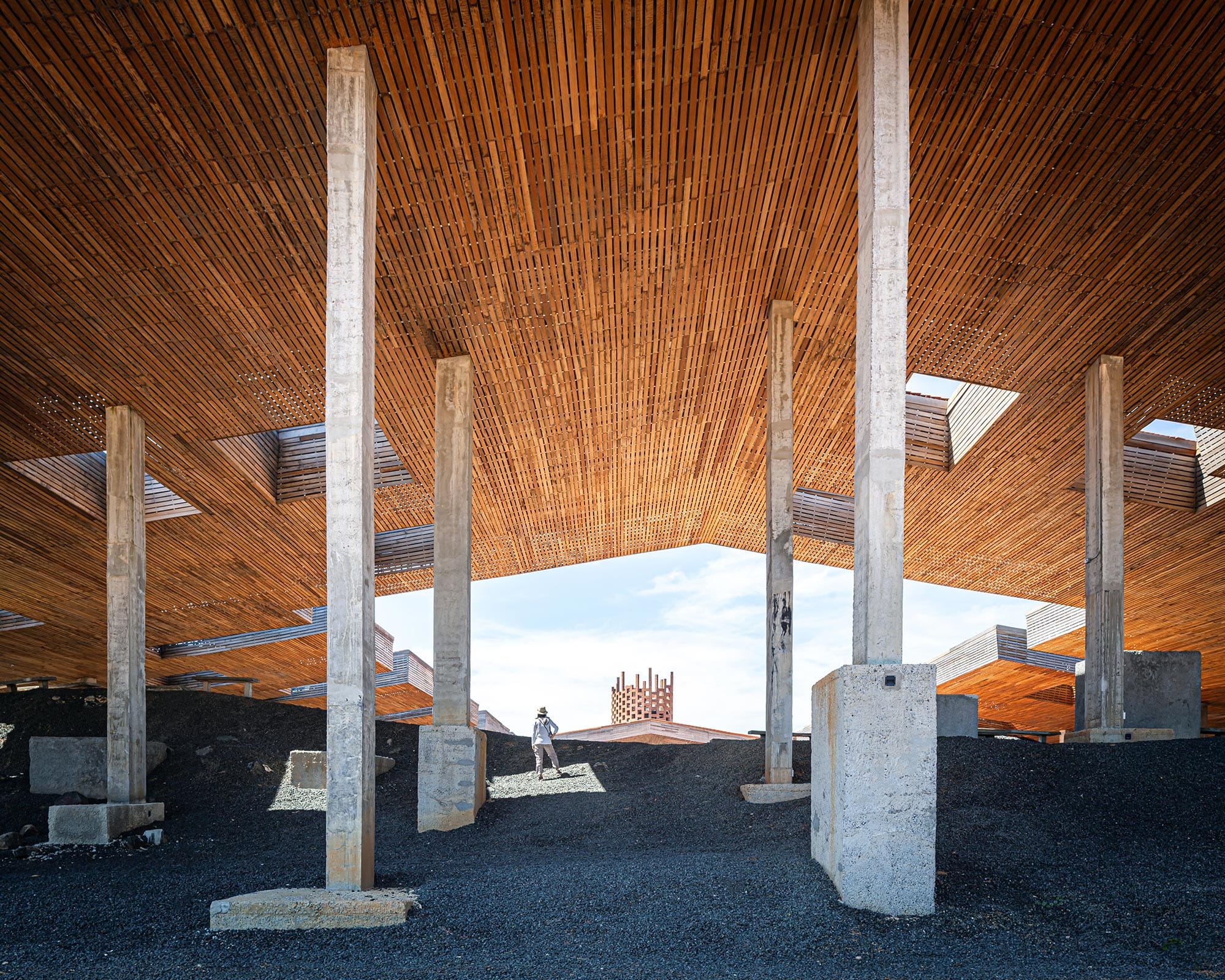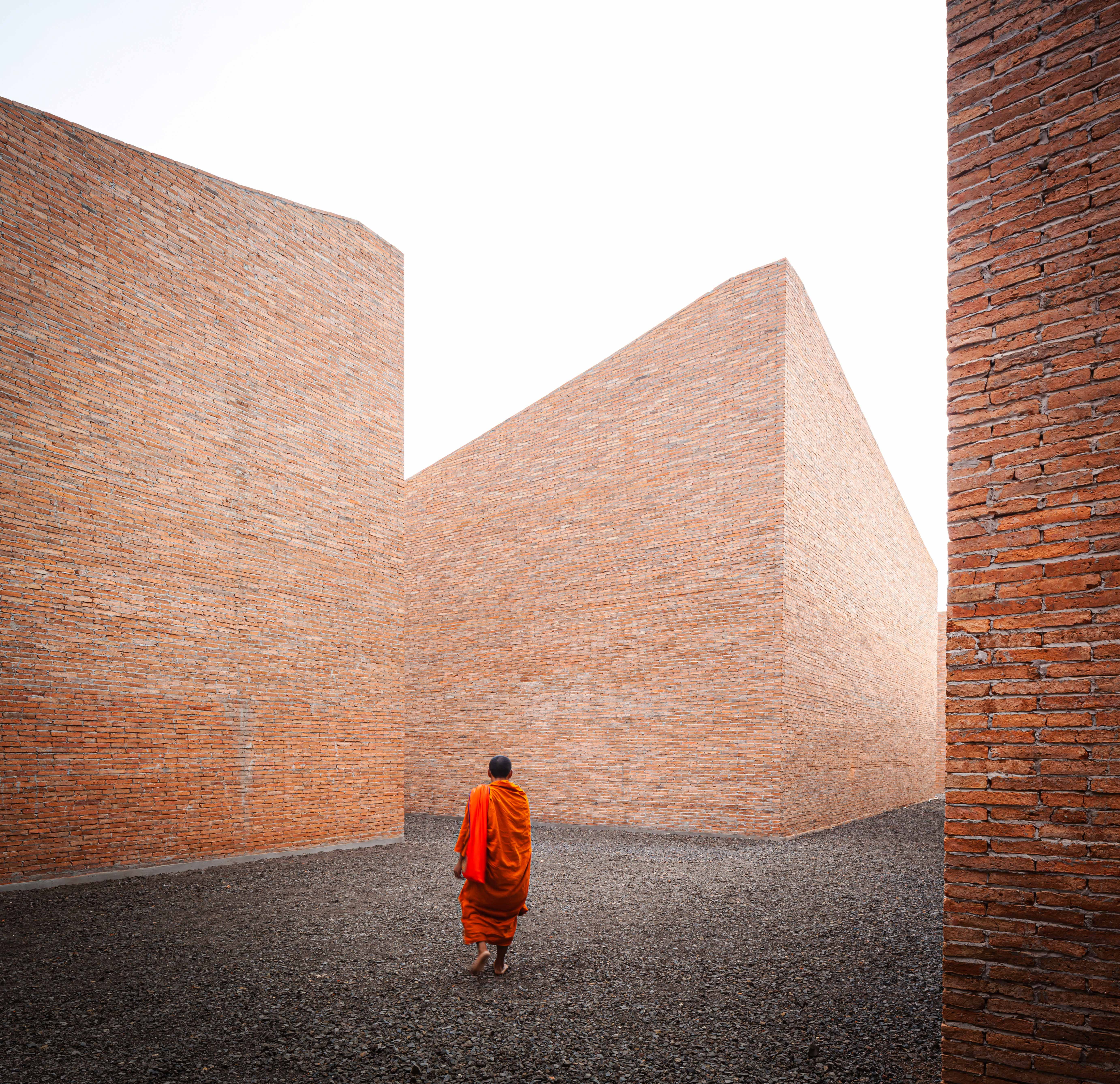“My architecture attempts to transcend materials and celebrate the neglected.” Boonserm Premthada
Boonserm Premthada is the founder of Bangkok based studio Bangkok Project Studio. He started his practice in 2003, after completing his Masters of Architecture from Chulalongkorn University in 2002. His architecture is grounded in the context and aims to achieve a higher dimension where the users perceive his buildings by engaging all their senses. He is guided by the site and places where his buildings exist to create experiences that are not transient but long-lasting. Beyond the realms of theory and practice- Boonserm's work also carries a strong socio-economic and cultural agenda as many of his projects have social programs that aim to improve the lives of the underprivileged.
He is a recipient of several international awards including The Royal Academy Dorfman Awards 2019 by The Royal Academy of Arts, London, Global Award for Sustainable Architecture 2018, under the Patronage of UNESCO, Paris and Silpathorn awards 2019 to name a few. In this conversation with Design City, he talks about his practice and his approach to architecture.


There is a line on your company's website that says, "architecture is the physical creation of an atmosphere that serves to heighten man's awareness of his natural surroundings" Can you describe your process while designing for architectural sensation?
The atmosphere of a place is made up of sensations we derive from form, taste, smell, sound, and touch, which are all abstract. Architecture serves to render these things tangible for humans to feel the atmosphere of a place and make impressions and memories. My architecture helps people to evoke these feelings and for me, that is humanity.
How would you define the role of an architect in regulating the current development in Thailand? What role do the leading architects play in making a sustainable future?
Architecture is just a profession that drives society and the physical development of cities. Architects cannot save the world or transform a country, but at least through their works, they can make the public recognize specific values or problems of the moment or become aware of neglected social issues. To me, learning to understand what is human is essential. Using architecture to create positive attitudes in communities and elevate the quality of life is what I'm doing.


What is the role of form in your projects in forging a relationship between humans and nature?
My architecture attempts to transcend material and structural constraints and celebrate the neglected. My architecture is not created to be perceived only with eyes; other senses must be involved – sound, smell, taste and touch. That's why visitors need to be there to appreciate it.
Most of your projects are contextual. Your buildings respond to the site, its topography and the climate. What does sustainable architecture mean to you?
I respect the original spaces – the trees, the rocks, the soil, the water, the air – all of which are original and important. They are part of history, telling stories of a place. In our culture, we believe that these things are alive. If we do not preserve natural resources, they will undoubtedly be used up one day. After all this time, humans have always put their ideas at the centre of everything. To me, sustainable architecture is non-human centric.
How do you measure success and do you have any metrics of performance measurement?
Success, to me, is that the buildings are constructed as designed. I design only 50% of the buildings, and the rest is in the hands of nature, people, and other creatures to complete them and the atmosphere. My knowledge and conceptual outputs have indiscriminately uplifted humans' minds and will become learning places for future generations.
Low skilled labour and budget constraint are often an existing condition in the building sector in developing countries like Thailand. How do you address that in your projects, while still creating your architectural language?
My architecture is created for the public, with an intention to benefit the majority of the people. Working in a developing country, we must use our capacity to develop an architecture that helps as many people as possible. Under government-funded projects, my architectural works create jobs and income for the local people, train workers to become skilled artisans, inspire them to take pride in their home, and pass this value on to the next generations. The word "local architecture" has become the future of the world.


How has teaching architecture influenced your position and practice?
I graduated in Thailand and never studied abroad. At architecture schools, everyone, including me, has learned the Western world's theories and principles. After the economic crisis in Thailand in 1997, I revisited my ideas and realized that architecture takes different approaches, depending on what is suitable. So, I started by forgetting what I learned and doing the opposite.
Who are some of the people that inform and inspires your work?
I am interested in non-architecture built by villagers who are not architects because these works were born out of necessity, purity, and intuition.
Do you have any advice for young architects?
I compare myself to a small boat setting a lonely sail on the sea, not afraid of storms and wind, unlike a freighter that won't set off unless the sea is calm. Running a small studio gives me the freedom to think and experiment with new work approach.


ABOUT BANGKOK PROJECT STUDIO
Boonserm Premthada was born and raised in Bangkok, Thailand. He received his Bachelor of Fine Arts (Interior Design) with first-class honours in 1988 and Masters of Architecture from Chulalongkorn University in 2002 and established his office named Bangkok Project Studio in 2003.
Boonserm believes that architecture is the physical creation of an atmosphere that serves to heighten man’s awareness of his natural surroundings. His work isn’t about designing a building, but rather the manipulation of light, shadow, wind, sound, and smell... creating a “poetics in architecture” that is a living being sense.
Beyond the realms of theory and practice- Boonserm’s work also carries a strong socio-economic and cultural agenda as many of his projects have social programs that aim to improve the lives of the underprivileged.
Images: Spaceshift Studio
SUBSCRIBE TO OUR NEWSLETTER



IMAGE GALLERY
SHARE ARTICLE
COMMENTS